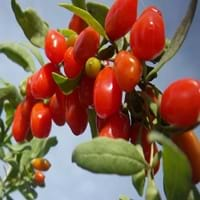Health Benefits
Cancer prevention, Kidney stone treatment, Prevents constipation, Treatment of alzheimer's disease
Anti-oxidant properties, Eye care, Helps in cartilage regeneration, Regulates Blood Sugar, Treatment of osteoarthritis
General Benefits
Digestive aid, Improves eye vision, Maintains healthy cholesterol level, Treatment of migraine
Boosts immune system, Digestive aid
Skin Benefits
Anti-aging benefits, Heals sunburn, Skin rejuvenation, Treatment of dark spots
Anti-aging benefits, Reduces wrinkles, Treatment of skin diseases
Hair Benefits
Prevents hair loss, Regulates hair growth, Treatment of dandruff
Protects hair, Regulates hair growth
Allergy Symptoms
Anaphylaxis, Asthma, Breathing difficulty, Coughing, Drop in blood pressure, Hives, Skin rash, Stuffy nose, Swelling of mouth, tongue or lips, Wheezing
Anaphylaxis, Itching, Sneezing, Wheezing
Side Effects
Allergic reaction, Skin rash, Might slow down the process of blood clotting
May interact with some drugs
Best Time to Eat
As a snack in the late afternoon, Don't consume at night and before bed, Eat the fresh ones, avoid mixing with any other foods, don't eat after meal., Morning time (before lunch)
Any time except an hour after meal, Don't consume at night and before bed
Vitamin B5 (Pantothenic Acid)
Vitamin C (Ascorbic Acid)
Vitamin K (Phyllochinone)
Calories in Fresh Fruit with Peel
Calories in Fresh Fruit without Peel
Not Available
Not Available
Calories in Canned Form
Not Available
Season
Autumn, Summer
Autumn
Varieties
Cabernet Sauvignon, Merlot, Pinot Noir, Syrah/Shiraz and Zinfandel
No Types
Color
Green, Red
Scarlet red
Inside Color
Light Green
Orange
Taste
Sweet-Sour
Slightly bitter, Tart
Origin
Western Asia, Central Europe
Unknown
Soil Type
Clay loam, Sandy loam
Well-drained
Climatic Conditions
Warm
Cold, Hot
Facts about
- If left alone, a grapevine can spread 50 feet and even more.
- There are more than 8,000 varieties of grape worldwide.
- They are available in 7 different colors: red, green, white, black, purple, blue and golden.
- Study says a man named Li Qing Yuen used to eat goji berries daily and lived for 252 years.
- They are also known as wolfberries in India & China.
- This fruit is used for spiritual purposes at many places.
Other Countries
Argentina, Armenia, Australia, Chile, France, Iran, Italy, Portugal, Romania, Turkey, United States of America
Canada, France, India, United States of America
Top Importer
United States of America
United States of America
Botanical Name
Vitis vinifera
Lycium barbarum
Synonym
Not Available
Wolfberry
Subkingdom
Tracheobionta
Tracheobionta
Division
Magnoliophyta
Unknown
Class
Magnoliopsida
Unknown
Subclass
Rosidae
Asteridae
Family
Vitaceae
Solanaceae
Species
Vitis vinifera
L. barbarum
Generic Group
Grape
Not Available
Difference Between Grape and Gojiberry
We might think that Grape and Gojiberry are similar with respect to nutritional value and health benefits. But the nutrient content of both fruits is different. Grape and Gojiberry Facts such as their taste, shape, color, and size are also distinct. The difference between Grape and Gojiberry is explained here.
The amount of calories in 100 gm of fresh Grape and Gojiberry with peel is 69.00 kcal and 32.00 kcal and the amount of calories without peel is Not Available and Not Available respectively. Thus, Grape and Gojiberry belong to Low Calorie Fruits and Low Calorie Fruits category.These fruits might or might not differ with respect to their scientific classification. The order of Grape and Gojiberry is Vitales and Solanales respectively. Grape belongs to Vitaceae family and Gojiberry belongs to Solanaceae family. Grape belongs to Vitis genus of Vitis vinifera species and Gojiberry belongs to Lycium genus of L. barbarum species. Beings plants, both fruits belong to Plantae Kingdom.









